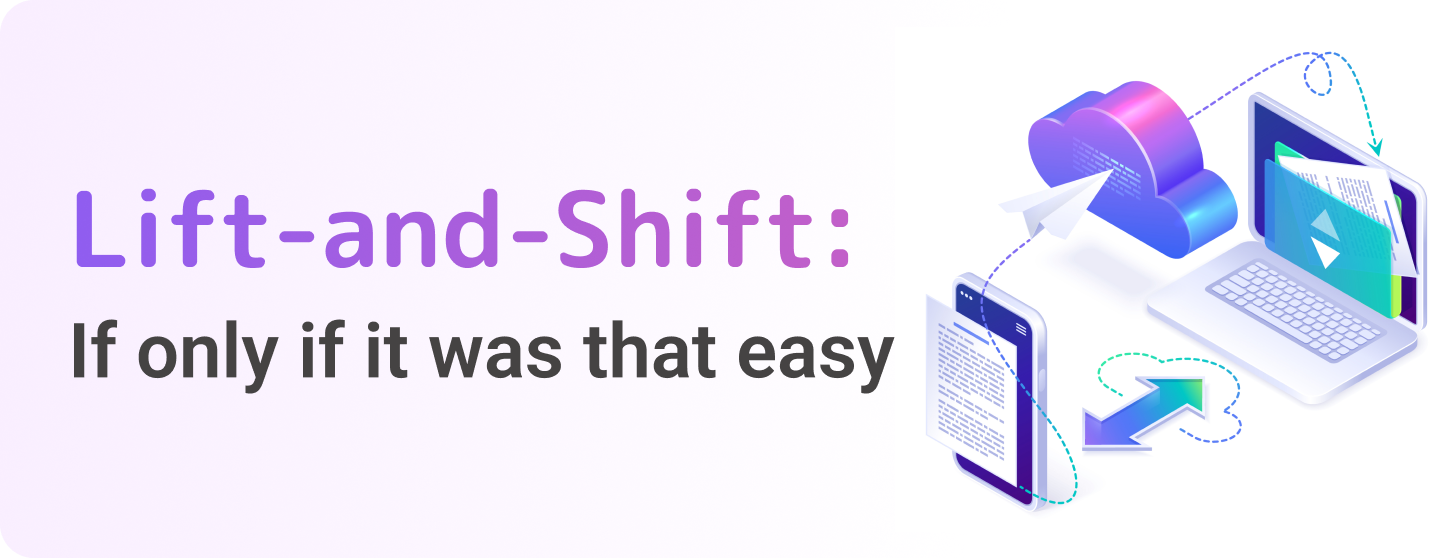

ERP Migration Challenges Are Real. But So are Their Solutions
Anyone who has moved from one house to another can vouch for this- it’s exhausting! Not just physically, but logistically, emotionally, psychologically and architecture-ly.
There is a whole nightmare of putting an entire life and home into some boxes, labelling them right, shipping them without any damage, moving them on time and then another nightmare- of unboxing them, rearranging everything in new places and getting used to the new house.
That’s before you step out into the neighbourhood and acclimatise yourself to everything new there – the weather, the community, the shops, the transport and the culture.
Is IT any different? Definitely not. What else would explain all the hesitation, delays and arguments that come up when a lovely, shiny, promising and solid technology is right there- waiting for the enterprise to embark upon! It’s not about doubting that new technology, it’s about wondering about ‘getting there’. The ‘how’ is more than a signature on a contract. It takes days, people, workloads, transitions, architecture-shifts, trainings, security precautions, data cleansing, resettling – everything and so much more. No wonder ERP migration is straddled with so many fears and setbacks.
Just like a family has to put all their stuff, memories, appliances and furniture in well-strapped boxes, an enterprise has to squeeze in all its workloads and data into the right migration boxes. Provisioning workloads and managing application-uptime are worries that cannot be removed with a simple ‘Fragile, Handle Carefully’ label. There are many doubts and apprehensions that both IT and business teams face with migration.
There is a lot of complexity and decisions that have to be embraced with any ERP migration exercise. Consider, for instance, how customisation varies from organisation to organisation. A Panorama Consulting 2023 report showed that about seven per cent enterprises chose no customisation but around 11 per cent wanted to at least add some configuration and around 15 per cent some modifications as well. The rest 20.8 per cent and 44.8 per cent went for heavy to moderate customisation, respectively. Also, doing migration in phased manner or as a full roll-out has varying preferences. Like- less than a quarter took a big-bang implementation approach. But if 20.8 per cent preferred the full deployment mode, 27.9 per cent went for a phased route as per modules, 12.6 per cent by business unit and 18 per cent by location. As you can see, every enterprise has different context and comfort-level- and hence, a different set of challenges.
Lifting those heavy boxes (more so, when your box has a different size and contents than what others carry) is never going to be easy. Accept that. What’s possible, though, is getting the right ‘Movers and Shakers’ of this area when you decide to replug your IT in any way. You need experts like Presence360 who have done this for years, and for all kinds and sizes of enterprises. You need the deft hands and smart execution of someone like Presence 360 that take care of everything under the sun, and also under the moon (the unforeseen parts and the contingencies), here.
ERP migration is tricky but it affects and irons out so many business processes when that decision is taken. The 2023 report also unravelled that 44.3 per cent enterprises improved their ‘key’ business processes and 47 per cent improved ‘most’ business processes. It’s definitely a jump worth taking with all the impact on business agility, process tightening and scalability that happens when you go for it.
Would your ERP migration be completely smooth if you do all of the above? Not hundred per cent. But with Presence360 by your side, you can add more 9s than you thought you could. And Presence 360 gives you that confidence. Moving the house is never easy. But you can handle the logistics and time parts of it better, faster and simpler with the right movers and packers. Those who don’t have just great trucks. But who know the good roads too.

Our team is here to help & answer all your question. We ensure a quick responce.